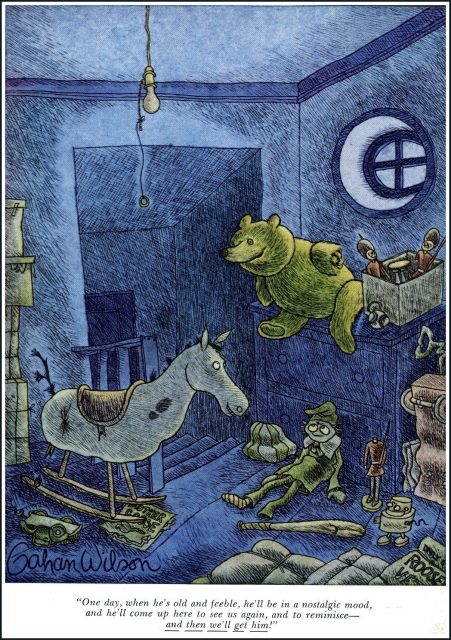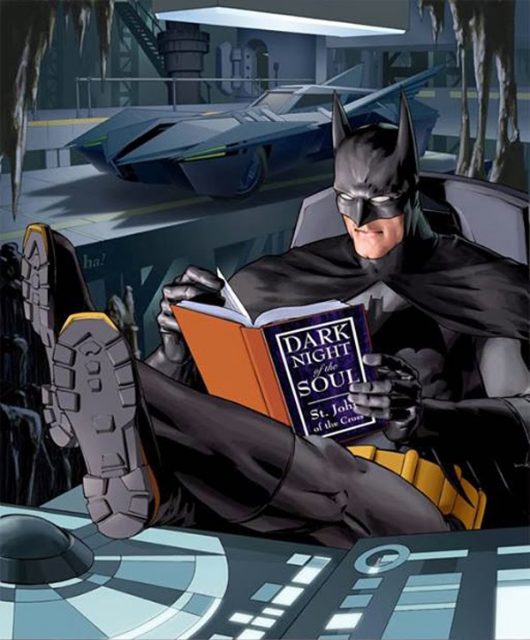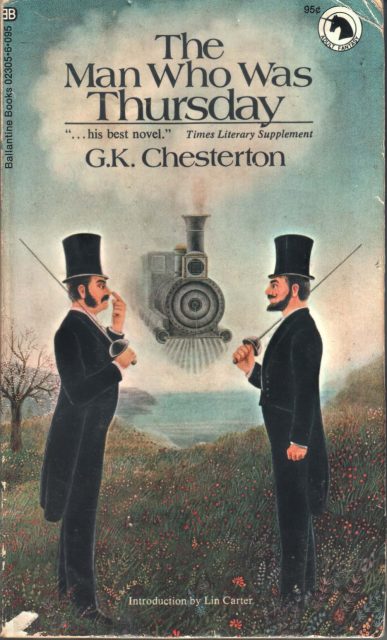
What did I read, listen to or watch during the past year? Let’s see….
Published, released or broadcast in 2019
• Books
Hellbender, by Frank J. Fleming — A very silly post-apocalyptic fantasy revolving around a mysterious cube on which are drawn bunnies. The characters are mostly flakes, and the story about “warfs” (war orphans) in the haphazardly totalitarian Confederacy of Astara after the Third Digital Rights War is too complicated to easily summarize. However, the author, friendly Frank Fleming 1, is clever and funny, and the book is always entertaining even at its most confusing. A representative paragraph:
“Donuts!” Lulu jumped up from the couch. “I always said one of these days you’d do something useful … or accidentally kill us all. And it was the former!”
• Movies
None.
• Music
There was Winfield in September, and a few concerts during my visit to St. Louis. If you’re ever in that area, see if Dave Black, Roger Netherton or Joey Koenig are playing anywhere.
• Television
American? Ha.
Japanese: The only show I watched all the way through was Endro. It’s featherweight fluff, but it was fun. I also managed to watch about half of the first season of the similarly light Iruma-kun, which is something like Hayate goes to Hells. I sampled most everything on Crunchyroll that wasn’t obviously drivel, but I didn’t get beyond the second episode of anything else.
Too often, watching anime felt like doing homework. My CR membership recently expired, and I doubt that I’ll renew it. This is the first time in several years that I didn’t order a Japanese calendar. I may write a few summary posts about Japanese animation (don’t hold your breath), but I’m pretty much done with the form.
So much for 2019.
So, what else did I read this year? Mostly old favorites: J.R.R. Tolkien, R.A. Lafferty, Gene Wolfe, Tim Powers, G.K. Chesterton, Tom Holt, Cordwainer Smith, etc.
New to me this year
The Elementary Particles, Michel Houellebecq — The token important book for the year. I was prompted to read it by the perspicacious, flaky Rod Dreher. Here’s Houellebecq on Lovecraft:
Lovecraft, for his part, knew he had nothing to do with this world. And at each turn he played a losing hand. In theory and in practice. He lost his childhood; he also lost his faith. The world sickened him and he saw no reason to believe that by looking at things better they might appear differently. He saw religions as so many sugar-coated illusions made obsolete by the progress of science. At times, when in an exceptionally good mood, he would speak of the enchanted circle of religious belief, but it was a circle from which he felt banished, anyway.
Few beings have ever been so impregnated, pierced to the core, by the conviction of the absolute futility of human aspiration. The universe is nothing but a furtive arrangement of elementary particles. A figure in transition toward chaos. That is what will finally prevail. The human race will disappear. Other races in turn will appear and disappear. The skies will be glacial and empty, traversed by the feeble light of half-dead stars. These too will disappear. Everything will disappear. And human actions are as free and as stripped of meaning as the unfettered movement of the elementary particles. Good, evil, morality, sentiments? Pure “Victorian fictions”. All that exists is egotism. Cold, intact and radiant.
Lovecraft wrote about unimaginable horrors; Houellebecq writes about human behavior. There is overlap. I might read Submission sometime, and that will be enough of Houellebecq.
Less important, but more enjoyable:
The Conan stories of Robert E. Howard — If all you know of Conan is Arnold Schwartzenegger and Frank Frazetta, you don’t know Conan. Dr. Mauser discovered Howard at about the same time I did and reacted similarly. See John C. Wright for extensive commentary.
The Moon Pool and The Metal Monster, A. Merritt — Science fiction from almost exactly a century ago, still quite readable, albeit a bit purplish in its prose. Blame Joseph Moore for piquing my curiousity.
A Princess of Mars, Edgar Rice Burroughs. I figured I ought to read something by Burroughs to see just how bad a writer he was, since people still read his books despite the contempt of the literati. Surprisingly, he’s not bad. He’s not Howard’s caliber, but he can tell a story.
Honor at Stake: A Catholic Action Horror Novel, Declan Finn — Blame Moore for this one also.
Please Don’t Tell My Parents I’m a Supervillain, Richard Roberts — Blame J Greely for drawing my attention to this. The daughter of superheroes discovers that her own wild talent makes her best-suited to be a mad scientist. It’s fluff, clever and entertaining. There are hints that the sequels could be darker.
… and that’s enough for 2019.
















